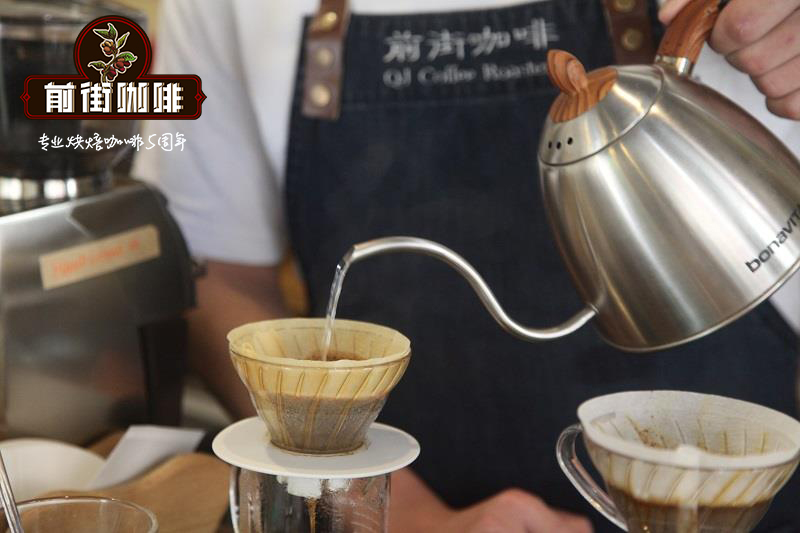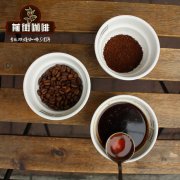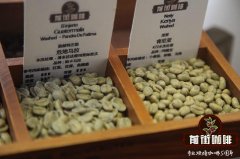Introduction of coffee beans from Katuji processing Plant of Ausaya Cooperative in Kenya. How to drink Kenyan AB Coffee

Professional coffee knowledge exchange more coffee bean information please follow the coffee workshop (Wechat official account cafe_style)
2018 new season Kenya Ausaya Cooperative Katuji treatment Plant exquisite washing pure SL variety AB TOP coffee
Place of Origin。 Othaya Cooperative, Nyeri Country, Kenya
A processing plant. Gatugi Station
Altitude. 1864 M
Bean seed. SL28 & SL34 / Kenyan species
How to deal with it. Washed / washing
The year of harvest. 2017 / 2018
Baking degree. Light / shallow baking
Green tea, honey, round fruit juice taste
Kenya is located in eastern Africa, the equator runs across the central part, and the East African Rift Valley runs from north to south, bordering Ethiopia, Uganda, Tanzania and other coffee producing areas. Kenya has a unique coffee growing environment, which is mainly distributed around the capital Nairobi and the northeast, extending to the Nyeri, Meru and Embu producing areas of the Kenyan mountains.
This batch of Katuji processing plant is located in the southern part of the Nyeri producing area of Kenya, with an elevation of 1864 meters. It was established in 1979 and is one of the processing plants under the Asaya Farmers' Cooperative. It is about 140km away from Nairobi, the capital of Kenya. The coffee bushes are nourished by well-drained, organic-rich volcanic red soil, and the temperature difference brought about by high altitude makes the coffee fruit ripen slowly, creating Kenyan coffee with flavor and excellent acidity and sweetness.
Under the supervision of the regional committees, farmers strictly abide by the planting policies formulated by cooperatives, and at the same time, in order to increase biodiversity and maintain the good growth of crops, intercropping is also carried out. In addition to coffee trees, grevillea and macadamia are also planted as shade trees, as well as banana trees.
Kenya Coffee Neriga Tuji processing plant AB TOP (shallow roasting) KENYA NYERI OTHAYA GATUGI AB TOP. Igawa processing plant (shallow baking) Burundi Kazosa Nickel 39 Tian Ikawa Station flavor description: red cherry, milk.
[Kenya NyeriGatugi AA]
Country: Kenya
Grade: AA
Production area: Nyeri Central Dashan area
Altitude: 1600-2300 m
Soil quality: volcanic clay
Treatment: washing
Baking: medium and shallow
Variety: SL28,SL34
Processing plant: Gatugi processing plant
Producer: small coffee farmers
Flavor: floral aroma, blackcurrant, cranberry
Gatugi is one of the few coffee this year from the Othaya coffee farmers' cooperative, which has been operating since the 1950s and now has 18 washing plants. The Gatugi processing plant is located 1900 meters above sea level, just on the banks of the Ichamma River (Ichamama), and upstream is the Karima (Karima) forest. Usually small washing stations work with special communities, that is, so-called cooperatives. Large cooperative groups such as Aghuti are able to produce the best Kenyan coffee on a regular basis. The coffee is bought by traders directly from cooperatives, not through Kenya's auction system, which allows them to choose the number of beans to buy.
The dry aroma is rich in sweetness, rich layers of crude sugar, and fruit flavors similar to raisins and dried black figs. Filled with hot water, the moist coffee powder is full of caramel aromas, reminiscent of walnut pie stuffing, with plenty of fruit aromas: apples, dark berries and sweet grape juice.
END
Important Notice :
前街咖啡 FrontStreet Coffee has moved to new addredd:
FrontStreet Coffee Address: 315,Donghua East Road,GuangZhou
Tel:020 38364473
- Prev

Atitlan Attland, Guatemala-La Pachu Manor SHB Kaddura, Kaduai
Professional coffee knowledge exchange more coffee bean information please follow the coffee workshop (Wechat official account cafe_style) Guatemala Atitlan Attland producing area-La Pachu Manor SHB Kaddura, Kaduai flavor? Guatemala is located in the Central American isthmus, many volcanoes in the formation of high mountains and plateaus, the production of high-quality Central American high-altitude very hard coffee beans, the ninth largest in the world
- Next

How to buy coffee beans in Kenya Bora?
Professional coffee knowledge exchange More coffee bean information, please pay attention to coffee workshop (Weixin Official Accounts cafe_style) Kenya bora AA from Kenya Coffee Gilenia Mountain, washing It has a wonderful, satisfying aroma, balanced acidity, well-proportioned particles and excellent fruity notes. Very unique taste, multi-layered taste and acidity of juice, finish
Related
- Detailed explanation of Jadeite planting Land in Panamanian Jadeite Manor introduction to the grading system of Jadeite competitive bidding, Red bid, Green bid and Rose Summer
- Story of Coffee planting in Brenka region of Costa Rica Stonehenge Manor anaerobic heavy honey treatment of flavor mouth
- What's on the barrel of Blue Mountain Coffee beans?
- Can American coffee also pull flowers? How to use hot American style to pull out a good-looking pattern?
- Can you make a cold extract with coffee beans? What is the right proportion for cold-extracted coffee formula?
- Indonesian PWN Gold Mandrine Coffee Origin Features Flavor How to Chong? Mandolin coffee is American.
- A brief introduction to the flavor characteristics of Brazilian yellow bourbon coffee beans
- What is the effect of different water quality on the flavor of cold-extracted coffee? What kind of water is best for brewing coffee?
- Why do you think of Rose Summer whenever you mention Panamanian coffee?
- Introduction to the characteristics of authentic blue mountain coffee bean producing areas? What is the CIB Coffee Authority in Jamaica?

